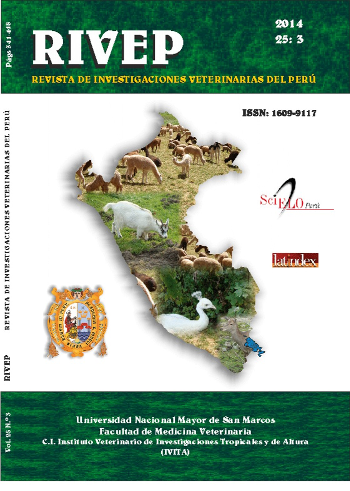DESCRIPTION OF PARASITES IN FAECAL SAMPLES COLLECTED IN PLAZAS OF DOWNTOWN TEMUCO, CHILE
DOI:
https://doi.org/10.15381/rivep.v25i3.10119Keywords:
contamination of public places, strongylus, poliparasitism, dogsAbstract
The aim of this study was to determine the level of contamination of public plazas in the city of Temuco with parasitic forms through dog faeces. A total of 102 faecal samples were collected in eight plazas of the city centre. Samples were processed by the sedimentation-flotation method (Teuscher method). The 89.2% of the samples resulted positive for a parasitic form, where strongyle-type eggs (69.6%) within the Phylum Nematoda and the oocysts of Isospora within the Phylum Protozoa (6.8%) were the most frequent. Half of the samples were poliparasitic where the triparasitism reached 21.5% of all samples. The findings indicate a polluted environment and poor waste management in the city center.Downloads
Downloads
Published
Issue
Section
License
Copyright (c) 2014 Pamela Olivares, Gastón Valenzuela, Christian Tuemmers, Jorge Parodi

This work is licensed under a Creative Commons Attribution-NonCommercial-ShareAlike 4.0 International License.
AUTHORS RETAIN THEIR RIGHTS:
a. Authors retain their trade mark rights and patent, and also on any process or procedure described in the article.
b. Authors retain their right to share, copy, distribute, perform and publicly communicate their article (eg, to place their article in an institutional repository or publish it in a book), with an acknowledgment of its initial publication in the Revista de Investigaciones Veterinarias del Perú (RIVEP).
c. Authors retain theirs right to make a subsequent publication of their work, to use the article or any part thereof (eg a compilation of his papers, lecture notes, thesis, or a book), always indicating the source of publication (the originator of the work, journal, volume, number and date).










